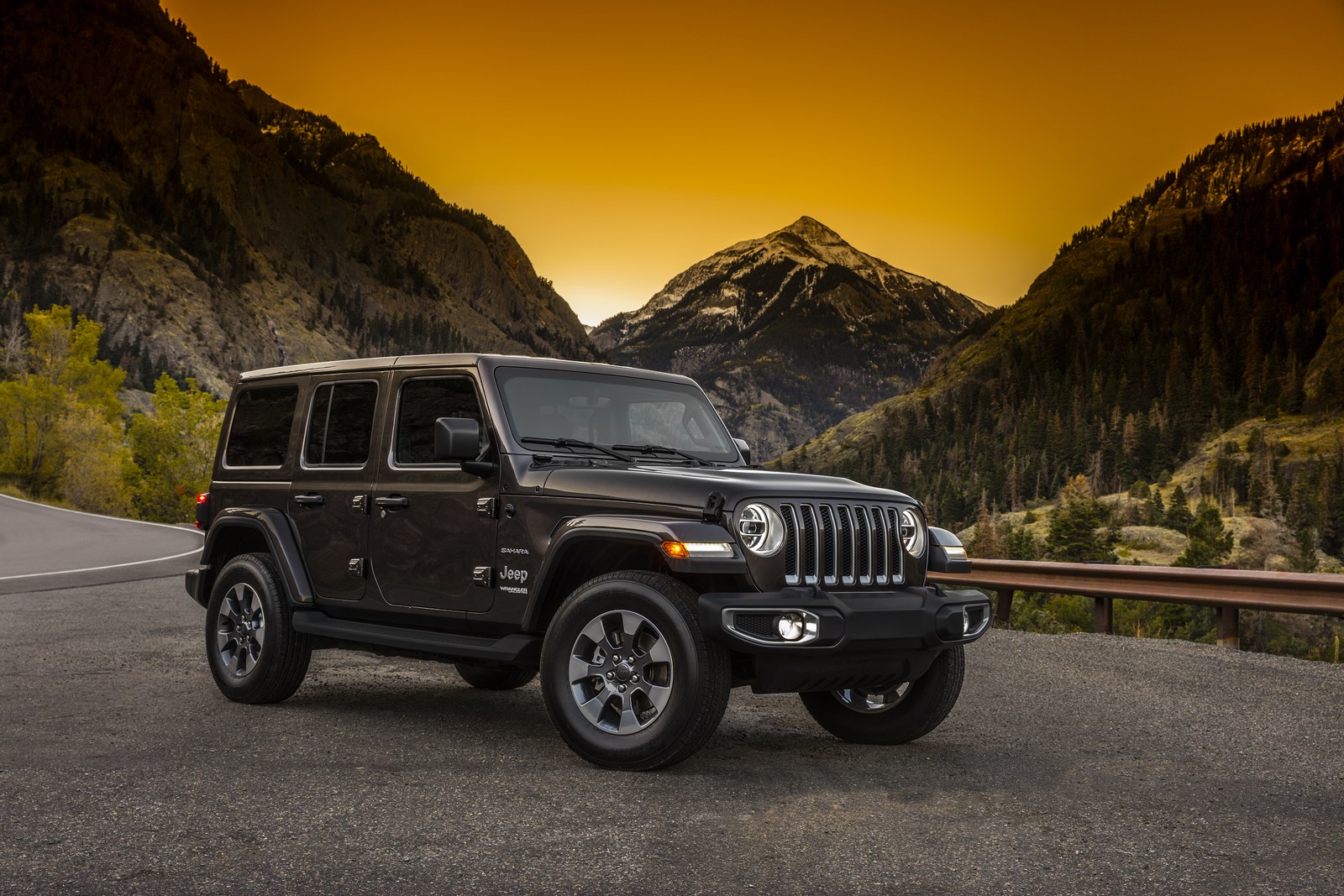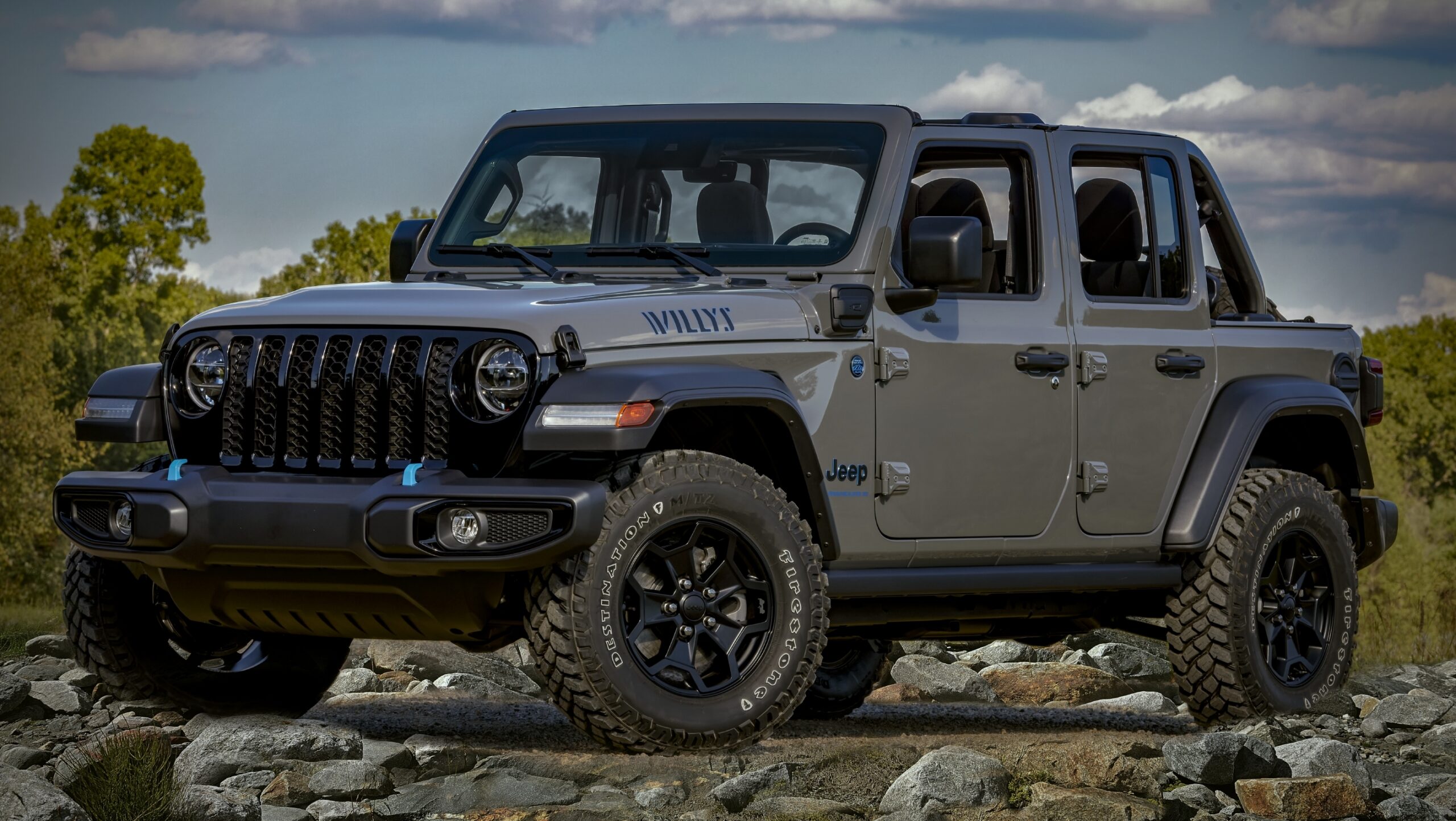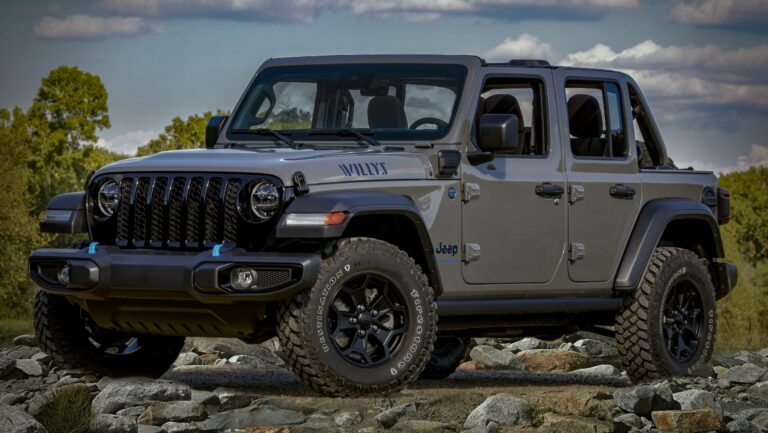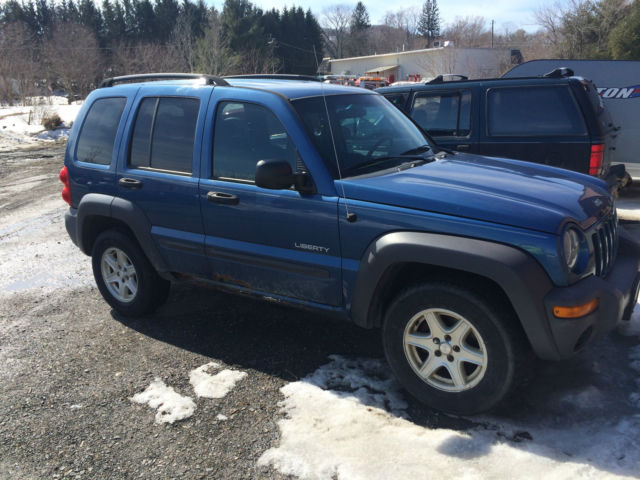Jeep Cherokee 2.5 For Sale: Your Guide to Finding a Legendary Off-Roader
Jeep Cherokee 2.5 For Sale: Your Guide to Finding a Legendary Off-Roader jeeps.truckstrend.com
The Jeep Cherokee XJ, produced from 1984 to 2001, stands as a testament to practical, rugged, and capable automotive design. Among its various powertrain options, the 2.5-liter engine variant holds a unique place in the market, often appearing as an attractive "Jeep Cherokee 2.5 for sale" proposition. Whether you’re a seasoned off-road enthusiast, a first-time 4×4 owner, or simply seeking a reliable and characterful daily driver on a budget, understanding the nuances of the 2.5L Cherokee is crucial. This comprehensive guide will delve into what makes this particular XJ special, what to look for when buying, and how to make an informed decision on your next adventure vehicle.
The Enduring Appeal of the Jeep Cherokee XJ 2.5L
Jeep Cherokee 2.5 For Sale: Your Guide to Finding a Legendary Off-Roader
The Jeep Cherokee XJ broke the mold when it first arrived, pioneering the modern SUV concept with its unibody construction, compact dimensions, and impressive capabilities. While the inline-six 4.0L engine often steals the spotlight, the 2.5-liter variants offer a distinct set of advantages, particularly for those prioritizing fuel economy (relatively speaking), lower running costs, and a more accessible entry point into the world of Jeep ownership.
The 2.5L XJ retains all the core attributes that made the Cherokee a legend: solid front and rear axles for unparalleled articulation and durability, a robust transfer case for true four-wheel drive, and a no-nonsense interior that prioritizes function over frills. When you see a "Jeep Cherokee 2.5 for sale," you’re looking at a vehicle that embodies the spirit of adventure, capable of tackling challenging trails while still being practical enough for daily commuting, provided you understand its quirks.
Understanding the 2.5-Liter Engine Variants
It’s crucial to distinguish between the two primary 2.5-liter engine options found in the XJ Cherokee, as their characteristics and "for sale" implications differ significantly:
-
The AMC 150 (2.5L Petrol/Gasoline Engine): This inline-four cylinder engine was primarily offered in North America and other markets. It’s known for its simplicity, reliability, and ease of maintenance. While not as powerful as the 4.0L, it offers decent torque for its size and can be quite economical for an SUV of its era. It’s a robust workhorse, often found paired with either a 5-speed manual (AX-5) or a 3-speed automatic (TF904) or 4-speed automatic (AW4) transmission. When considering a "Jeep Cherokee 2.5 for sale" with this engine, expect a straightforward, no-frills experience.
-
The VM Motori (2.5L Turbo Diesel Engine): Predominantly sold in European, Australian, and other international markets, this turbocharged diesel engine offered significantly better fuel economy and more low-end torque compared to its petrol counterpart. The VM Motori diesel is a different beast entirely, known for its strong pulling power but also for certain specific maintenance considerations, particularly concerning its cylinder heads if not properly maintained or if subjected to overheating. For those eyeing a "Jeep Cherokee 2.5 for sale" outside North America, this diesel variant is a very common option and requires a more specialized inspection.

What to Look For When Buying a Jeep Cherokee 2.5L
Purchasing any used vehicle, especially an older 4×4, requires diligence. When looking at a "Jeep Cherokee 2.5 for sale," pay close attention to these critical areas:
- Rust: The XJ’s unibody construction makes rust a primary concern. Inspect rocker panels, floorboards (especially under the carpets), rear quarter panels, the area around the leaf spring mounts, and the tailgate. Surface rust is common, but through-rust indicates serious structural compromise.
- Engine Health:
- Petrol (AMC 150): Check for oil leaks (especially the rear main seal, which is common but not always critical), coolant leaks, and listen for any unusual noises (knocks, ticks). Ensure the cooling system is in good order.
- Diesel (VM Motori): This is paramount. Look for signs of overheating in the past (discolored coolant, residue in the overflow tank). Check for oil in the coolant or coolant in the oil (milky appearance). Listen for excessive smoke from the exhaust (especially white smoke on startup or under load), which can indicate head gasket or cracked head issues. Check the turbo for excessive shaft play or oil leaks. The fuel injection pump is another common leak point. A full cold start and test drive are essential.

- Transmission & Drivetrain:
- Manual (AX-5): Check for smooth shifts, clutch engagement, and any grinding.
- Automatic (AW4/TF904): Ensure smooth shifts, no harsh engagement, and check fluid condition (should be red/pink, not brown or burnt-smelling).
- Transfer Case (NP231/NP242): Test all 2WD, 4WD High, and 4WD Low settings. Listen for clunks or grinding. Ensure the linkage engages properly.
- Suspension & Steering: Worn ball joints, tie rod ends, control arm bushings, and track bar bushings are common. These can lead to loose steering and the infamous "death wobble." Check for excessive play in the steering wheel.
- Electrical System: Test all lights, windows (power window motors can be problematic), HVAC system, and dashboard gauges.
- Modifications: Many XJs are modified. Assess the quality of any aftermarket parts (lift kits, bumpers, winches). Poorly installed modifications can cause more problems than they solve. Look for professional welding and proper geometry correction for lifted vehicles.
- Documentation: A complete service history is invaluable, especially for the diesel variant. Verify the VIN and ensure the title is clear.
The Buying Process: Tips for a Successful Purchase
- Set a Realistic Budget: Beyond the purchase price, budget for immediate maintenance, fluid changes, and potential repairs. An older vehicle, even a reliable one, will require attention.
- Research Market Prices: Prices for "Jeep Cherokee 2.5 for sale" vary wildly based on condition, mileage, modifications, and region. Use online marketplaces to get a sense of local values.
- Thorough Test Drive: Drive the vehicle on different types of roads. Listen for unusual noises from the engine, transmission, and suspension. Test the brakes, steering, and all 4WD modes. If possible, a light off-road test can reveal issues not apparent on pavement.
- Pre-Purchase Inspection (PPI): This is highly recommended. Take the Cherokee to a reputable mechanic who specializes in Jeeps or 4x4s. Their expertise can uncover hidden issues and give you leverage in negotiation.
- VIN Check: Run a vehicle history report (e.g., CarFax, AutoCheck) to check for accidents, salvage titles, or odometer rollbacks.
- Negotiate: Be prepared to negotiate, especially if you find issues during your inspection. Knowledge is power in this situation.
Owning a Jeep Cherokee 2.5L: Benefits and Challenges
Benefits:
- Affordable Entry: One of the most budget-friendly ways to get into a truly capable 4×4.
- Legendary Capability: Unmatched off-road prowess for its size, thanks to its robust drivetrain and solid axles.
- Vast Aftermarket Support: A huge community and endless parts availability make maintenance and modification easy.
- DIY Friendly: Relatively simple mechanics mean many repairs can be tackled by the home mechanic.
- Classic Appeal: The XJ’s timeless design makes it stand out from modern SUVs.
Challenges:
- Age-Related Wear: Expect to address worn bushings, seals, and hoses.
- Rust: Can be a significant issue, especially in salt-belt regions.
- Fuel Economy (Petrol): While better than the 4.0L, don’t expect Prius-like mileage.
- Diesel Engine Specifics: The VM Motori engine, while economical, requires meticulous maintenance to avoid costly head issues.
- Refinement: It’s an older SUV. Expect a rougher ride, more road noise, and fewer creature comforts than modern vehicles.
Maintenance & Upgrades for Your 2.5L XJ
Once you’ve found your "Jeep Cherokee 2.5 for sale" and made the purchase, regular maintenance is key to longevity. This includes routine oil changes, coolant flushes, transmission and transfer case fluid changes, and regular inspection of suspension components.
For those looking to enhance their XJ, the aftermarket is boundless:
- Lift Kits: Ranging from mild 2-inch lifts for tire clearance to aggressive 6+ inch lifts for serious rock crawling.
- Tires: Larger, more aggressive tires significantly improve off-road traction.
- Armor: Steel bumpers, rock sliders, and skid plates protect vital components.
- Recovery Gear: Winches, recovery straps, and high-lift jacks are essential for off-road adventures.
- Lighting: Upgraded headlights and auxiliary lights improve nighttime visibility.
Prioritize addressing any mechanical issues and performing all baseline maintenance before embarking on significant modifications.
Jeep Cherokee 2.5 For Sale: Estimated Price Guide
Please note: These prices are estimates and can vary significantly based on location, specific engine (petrol vs. diesel), overall condition, mileage, service history, and level of modifications. Use this table as a general guide.
| Condition Category | Description | Typical Price Range (USD / EUR Equivalent) | Key Considerations |
|---|---|---|---|
| Project / Parts | Non-running, significant frame/body rust, major mechanical failures (e.g., blown engine/transmission), often salvaged or titled for parts. | $500 – $1,500 | Requires extensive restoration or is best suited for parts donor. High risk, high reward for dedicated builders. |
| Fair / Runner | Drives, but has significant mechanical issues, moderate to severe rust, high mileage, needs immediate and considerable repairs to be reliable. | $1,500 – $3,500 | Good for a budget-conscious DIY enthusiast willing to invest time and money. Expect to replace major components and address rust. Diesel variants in this category may have engine issues. |
| Good / Driver | Mechanically sound, routine maintenance up-to-date, minor cosmetic flaws (dents, scratches, minor surface rust), moderate mileage. | $3,500 – $7,000 | Suitable for daily driving or light off-roading. May have tasteful modifications. Represents a good balance of cost and reliability. Diesel variants should have a clear history of head/cooling system maintenance. |
| Excellent / Restored | Near-perfect condition, minimal to no rust, low mileage for its age, extensive service records, professionally restored or highly customized. | $7,000 – $15,000+ | Rare to find, often a collector’s item or a meticulously built off-roader. Commands a premium. |
| Factors Influencing Price: | Engine type (Petrol generally lower, Diesel can be higher if well-maintained), Mileage, Rust severity, Aftermarket Modifications (quality matters), Service History, Geographic Location. | Always inspect thoroughly before purchase. |
Frequently Asked Questions (FAQ) about the Jeep Cherokee 2.5 For Sale
Q1: Is the 2.5L engine powerful enough for daily driving and off-roading?
A1: For daily driving, yes, it’s adequate. For off-roading, it has enough torque for most trails, especially in low range. It won’t be a speed demon, but its capability comes from its drivetrain, not sheer horsepower.
Q2: What’s the fuel economy like for the 2.5L Cherokee?
A2: The petrol 2.5L typically gets around 15-20 MPG (US), depending on driving conditions and maintenance. The diesel 2.5L can achieve significantly better, often 25-30 MPG or more, making it a more economical choice for longer distances.
Q3: Are parts readily available for the 2.5L Cherokee?
A3: Yes, parts for the XJ Cherokee are abundant, both new aftermarket and used. The AMC 150 petrol engine is very common. VM Motori diesel parts are also available, though sometimes require sourcing from specialized suppliers.
Q4: Is the Jeep Cherokee 2.5L reliable?
A4: Generally, yes. The AMC 150 petrol engine is known for its robustness. The VM Motori diesel can be reliable if properly maintained, but it is more susceptible to head issues if neglected or overheated. Like any older vehicle, reliability heavily depends on previous maintenance.
Q5: What is "death wobble" and how do I avoid it?
A5: "Death wobble" is a violent, uncontrolled shaking of the front end, usually at highway speeds, triggered by worn steering or suspension components (e.g., track bar, ball joints, tie rod ends, control arm bushings). It’s not exclusive to Jeeps. A thorough inspection of front-end components and replacement of worn parts prevents it.
Q6: Can a 2.5L Cherokee be used as a daily driver?
A6: Absolutely. Many owners use them daily. Be prepared for a more utilitarian ride compared to modern SUVs, and prioritize maintenance to ensure reliability.
Conclusion
The "Jeep Cherokee 2.5 for sale" represents an opportunity to own a piece of automotive history – a truly iconic and capable 4×4 that continues to impress with its rugged simplicity and off-road prowess. While it comes with the inherent considerations of any older vehicle, particularly regarding rust and specific engine characteristics (especially the diesel), its affordability, strong community support, and endless customization potential make it a rewarding choice for the informed buyer. With diligent inspection and a commitment to maintenance, a 2.5L XJ can serve as a dependable daily driver, a weekend adventure rig, or a solid foundation for a custom build. Embrace the journey, and you’ll find the Jeep Cherokee 2.5 to be more than just a vehicle; it’s a lifestyle.




